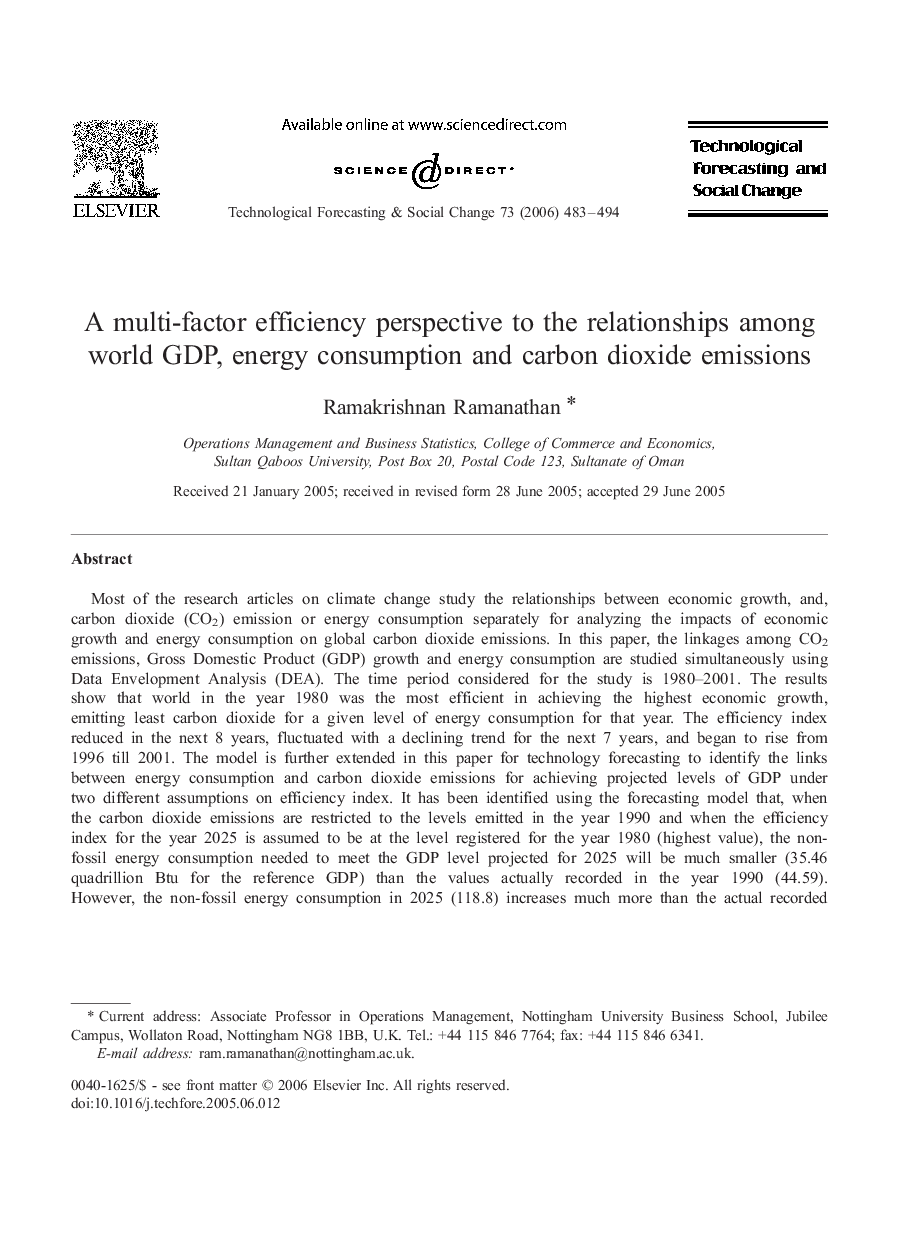| Article ID | Journal | Published Year | Pages | File Type |
|---|---|---|---|---|
| 897412 | Technological Forecasting and Social Change | 2006 | 12 Pages |
Most of the research articles on climate change study the relationships between economic growth, and, carbon dioxide (CO2) emission or energy consumption separately for analyzing the impacts of economic growth and energy consumption on global carbon dioxide emissions. In this paper, the linkages among CO2 emissions, Gross Domestic Product (GDP) growth and energy consumption are studied simultaneously using Data Envelopment Analysis (DEA). The time period considered for the study is 1980–2001. The results show that world in the year 1980 was the most efficient in achieving the highest economic growth, emitting least carbon dioxide for a given level of energy consumption for that year. The efficiency index reduced in the next 8 years, fluctuated with a declining trend for the next 7 years, and began to rise from 1996 till 2001. The model is further extended in this paper for technology forecasting to identify the links between energy consumption and carbon dioxide emissions for achieving projected levels of GDP under two different assumptions on efficiency index. It has been identified using the forecasting model that, when the carbon dioxide emissions are restricted to the levels emitted in the year 1990 and when the efficiency index for the year 2025 is assumed to be at the level registered for the year 1980 (highest value), the non-fossil energy consumption needed to meet the GDP level projected for 2025 will be much smaller (35.46 quadrillion Btu for the reference GDP) than the values actually recorded in the year 1990 (44.59). However, the non-fossil energy consumption in 2025 (118.8) increases much more than the actual recorded in the year 1990 when the efficiency index in 2025 is assumed to be at the level registered for the year 1990.
